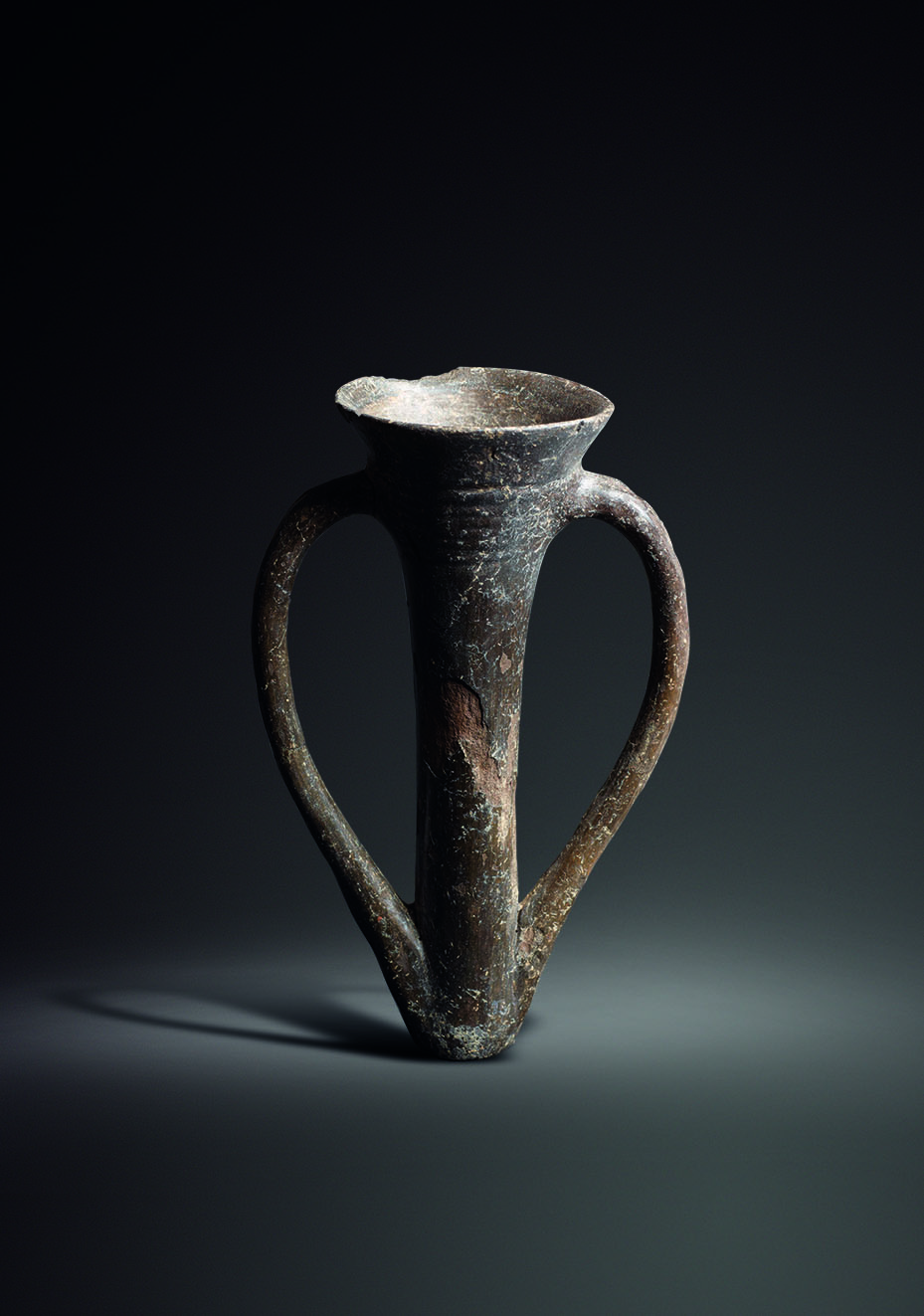EARLY BRONZE AGE (3200 BCE – 2000 BCE)
With the discovery of bronze in the Early Bronze Age, significant progress was made in mining, art, trade, and urbanization. The Early Bronze Age was a phase in which writing was not yet known in Anatolia. It was known as a period of independent city-states with temples and administrative structures.
Spout Cap (Yortan)
PRODUCTION IN THE EARLY BRONZE AGE
Troia represents the Early Bronze Age I culture in Western Anatolia. After excavating the Yortan (Gelembe, Manisa) burial site, the exact burial areas and artifacts (Babaköy and Ovabayındır) were found. The region is identified as “Yortan Culture.” The dominant tradition found in these burial sites consists of dark-colored, bright-polished, and handmade pottery.
SETTLEMENT CENTERS IN THE EARLY BRONZE AGE
The oldest known name of Anatolia is the “Land of Hatti.” The definition of “Land of Hatti” is used for the first time in written sources from Mesopotamia during the Akkadian Dynasty (2350 – 2150 BCE) and continues to be used until 630 BCE, as seen in Assyrian annals. The “Hittites” of Indo-European origin, who came to Anatolia and settled in the region, continued to use this definition. In the Early Bronze Age, the Hatti culture was prevalent in Central Anatolia. The most important settlements of this period are Troia I, Demircihöyük (Eskişehir), Kusura (Afyon), Semayük (Antalya), Beycesultan (Denizli), Tarsus (Mersin), Alişar (Yozgat), Alacahöyük (Çorum), Karaoğlan (Ankara), İkiztepe (Samsun), Kültepe (Kayseri) and Norşuntepe (Elazığ).
For more, you can visit our exhibition. Click for contact information.
How can we help you?


